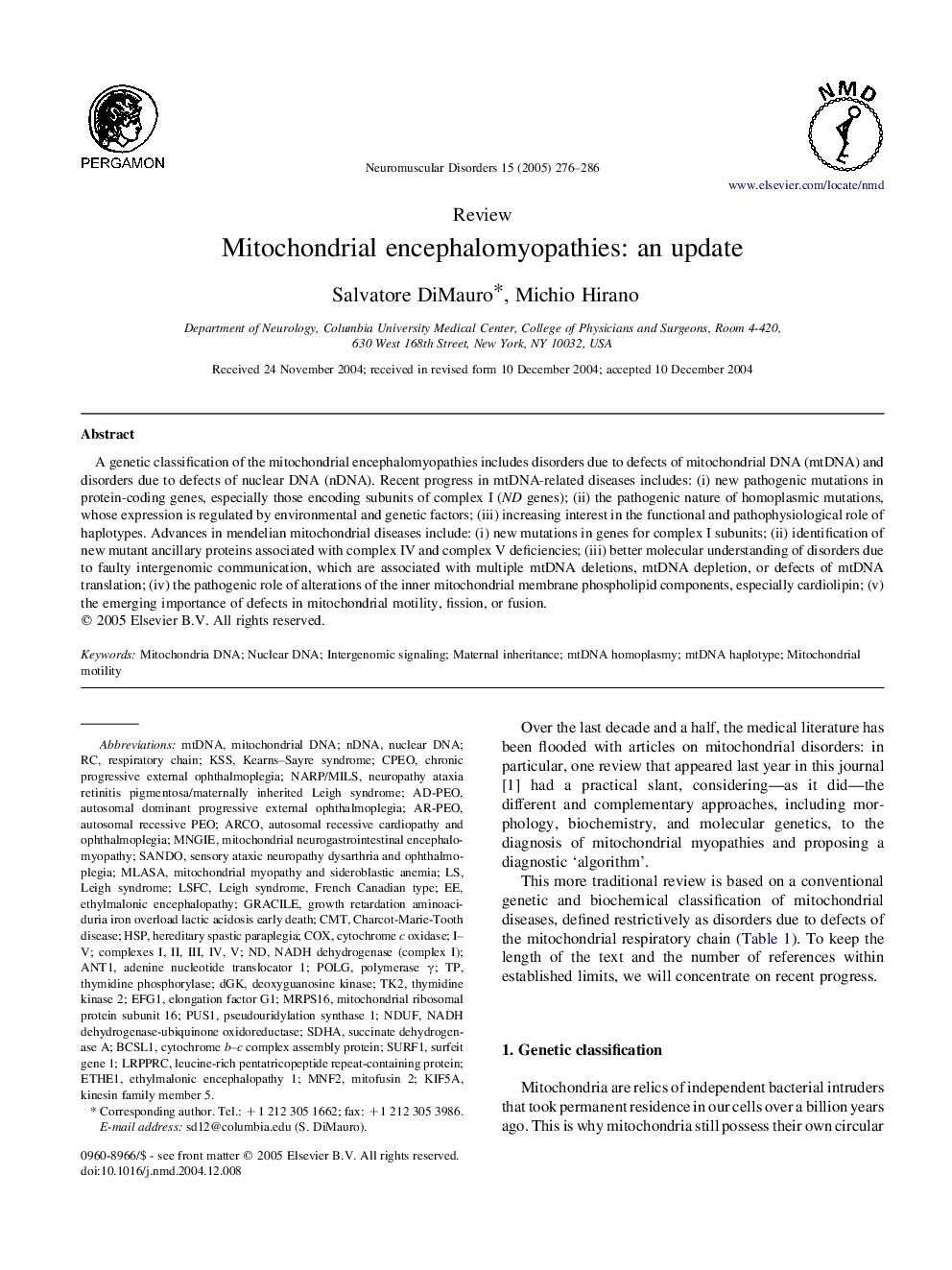| Article ID | Journal | Published Year | Pages | File Type |
|---|---|---|---|---|
| 9200435 | Neuromuscular Disorders | 2005 | 11 Pages |
Abstract
A genetic classification of the mitochondrial encephalomyopathies includes disorders due to defects of mitochondrial DNA (mtDNA) and disorders due to defects of nuclear DNA (nDNA). Recent progress in mtDNA-related diseases includes: (i) new pathogenic mutations in protein-coding genes, especially those encoding subunits of complex I (ND genes); (ii) the pathogenic nature of homoplasmic mutations, whose expression is regulated by environmental and genetic factors; (iii) increasing interest in the functional and pathophysiological role of haplotypes. Advances in mendelian mitochondrial diseases include: (i) new mutations in genes for complex I subunits; (ii) identification of new mutant ancillary proteins associated with complex IV and complex V deficiencies; (iii) better molecular understanding of disorders due to faulty intergenomic communication, which are associated with multiple mtDNA deletions, mtDNA depletion, or defects of mtDNA translation; (iv) the pathogenic role of alterations of the inner mitochondrial membrane phospholipid components, especially cardiolipin; (v) the emerging importance of defects in mitochondrial motility, fission, or fusion.
Keywords
KSSANT1SURF1Kearns–Sayre syndromepolymerase γMNGIECPEOadenine nucleotide translocator 1POLGETHE1sdhAEfg1TK2DGKCMTKIF5AMnF2Charcot-Marie-Tooth diseaseHspnDNAMLASACOXMitochondrial DNAMitochondria DNANuclear DNAI–VArcoMitochondrial Neurogastrointestinal EncephalomyopathyThymidine phosphorylaseThymidine kinase 2Deoxyguanosine kinasemtDNARespiratory chainSANDOLeigh syndromecytochrome c oxidasegracilemitofusin 2Maternal inheritanceHereditary spastic paraplegiaautosomal dominant progressive external ophthalmoplegiaChronic progressive external ophthalmoplegia
Related Topics
Life Sciences
Neuroscience
Developmental Neuroscience
Authors
Salvatore DiMauro, Michio Hirano,
